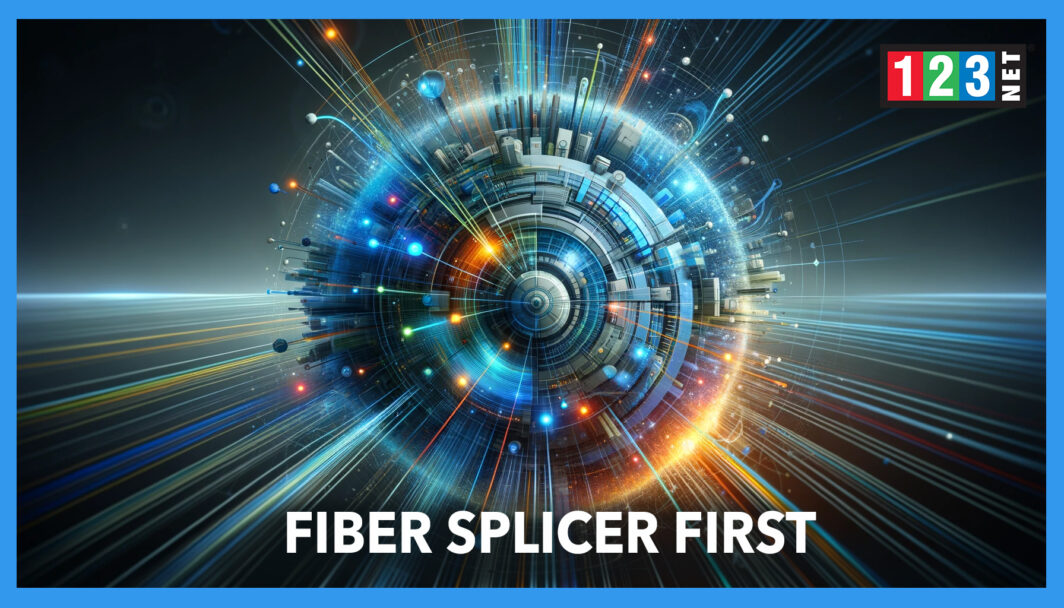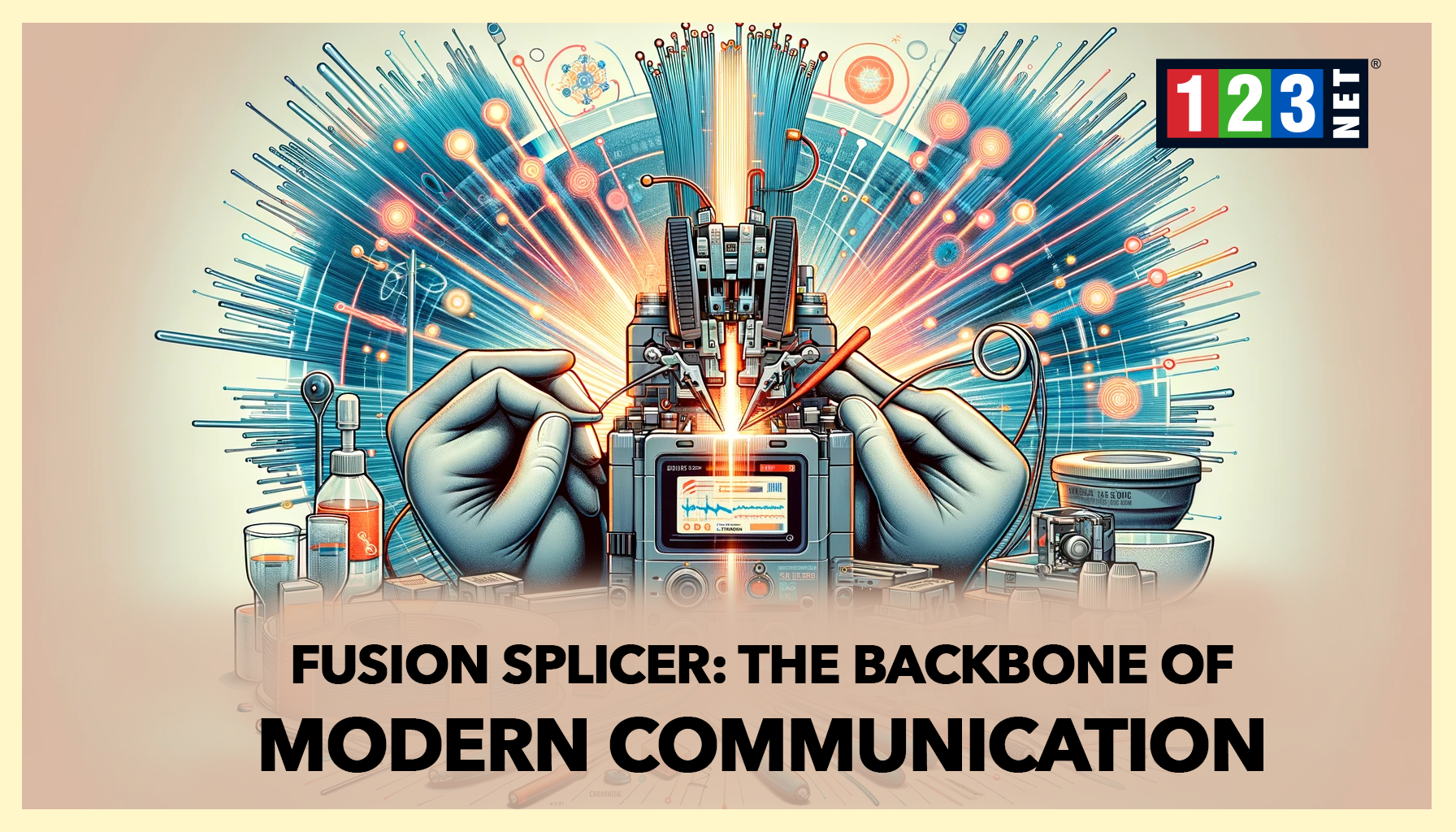
Introduction
In the telecommunications sphere, optical fiber networks’ integrity and efficiency stand as crucial pillars. Central to these networks is the process of fiber splicing, carried out by a device named a fiber splicer. This technology is essential for connecting two optical fibers, facilitating uninterrupted data transmission across extensive distances. As optical communication evolves, fiber splicers grow in importance, linking technological advancements with practical usage. This discussion aims to shed light on fiber splicers, examining their functioning, varieties, and their critical position in contemporary fiber optic communication systems. The exploration highlights their indispensable role, underscoring the seamless integration they provide in an ever-advancing digital landscape. As we delve deeper, the significance of these devices in enabling high-speed, reliable communication becomes evident, marking a milestone in the journey of optical fiber technology.
What is a Fiber Splicer?
A fiber splicer is a device crafted to connect two optical fiber segments, aiming for minimal loss and optimal signal efficiency. It comes in two main forms: fusion and mechanical splicing. Fusion splicing employs an electric arc to fuse fiber ends together, resulting in a unified strand. Conversely, mechanical splicing aligns the fiber ends in a specific connector, providing a faster yet less efficient connection. Each method plays a crucial role in building and upkeeping the global fiber optic infrastructure. The choice between them depends on the specific requirements of the project at hand. Regardless of the method, the goal remains the same: to ensure a reliable and efficient transmission path for data. This ensures that our global communication networks remain robust and capable of handling the increasing data demands. By understanding these splicing techniques, one can appreciate the intricate work behind the seamless operation of our modern telecommunications systems.
How Fiber Splicers Work
Fiber splicers are essential for aligning and joining optical fibers, minimizing loss and ensuring signal continuity. They utilize two main techniques: fusion and mechanical splicing. Fusion splicing, the preferred method, uses an electric arc for heating and melting fiber ends. This creates a clean, precise splice with low loss and high strength, ideal for permanent connections. It’s crucial in high-reliability areas like optical communications and challenging environments like high-altitude splicing.
Mechanical splicing, in contrast, is quicker and suits temporary or field repairs. It employs mechanical fixtures for fiber alignment and an index matching gel to lessen light loss. Though it may result in higher splice loss than fusion splicing, its convenience and flexibility are advantageous when fusion splicing tools are unavailable. Both methods are indispensable in maintaining the global fiber optic network’s backbone, ensuring efficient and reliable data transmission.
Fusion splicing’s significance lies in its ability to provide a durable and efficient connection, critical for the seamless operation of telecommunications systems. Mechanical splicing, while not as efficient, offers an indispensable alternative for situations requiring immediate attention. Each method has its specific applications, with fusion splicing being the go-to for long-term solutions and mechanical splicing for quick, temporary fixes.
Understanding these techniques is key to appreciating the complex work behind our telecommunications infrastructure. The choice between fusion and mechanical splicing depends on the project’s needs, balancing efficiency, reliability, and availability of resources. Both are vital to the performance and integrity of fiber optic links. This is ensuring the robustness of our communication networks against increasing data demands and challenging conditions.

Key Features of High-Quality Fiber Splicers
High-quality fiber splicers stand out for their precision, durability, and user-friendliness. Precision is vital for accurately aligning microscopic fibers, minimizing transmission loss. Durability ensures the splicer’s resilience against field conditions and environmental challenges. A user-friendly interface simplifies operations, enabling quick and precise splicing by technicians.
The advent of automation in fiber splicers has revolutionized the splicing process. Features like auto-alignment, loss estimation, and splice strength testing enhance reliability and accessibility. These advancements allow for consistent, high-quality splicing, even under difficult circumstances. Automated fiber splicers have become essential tools in telecommunications, offering efficiency and precision.
The importance of these characteristics cannot be overstated in maintaining a robust telecommunications infrastructure. Precision ensures optimal signal transmission, while durability and ease of use contribute to efficient field operations. Automation further streamlines the splicing process, reducing the potential for human error.
The integration of automated features in fiber splicers has bridged the gap between complex technology and practical application. Technicians can now rely on these devices to perform critical tasks with greater confidence and consistency. The evolution of fiber splicing technology continues to play a pivotal role in expanding global communication networks.
As fiber optic networks become increasingly integral to our digital world, the demand for high-quality splicing solutions grows. These advancements in fiber splicer technology ensure that our communication systems can meet the ever-increasing demands for speed and reliability. Ultimately, the development and refinement of fiber splicers contribute significantly to the advancement of global telecommunications, making high-speed, reliable communication a reality for users worldwide.
Choosing the Right Fiber Splicer
Choosing the right fiber splicer is crucial and hinges on factors like fiber type (single-mode or multi-mode), splicing volume, and environmental conditions at the splicing site. Single-mode fibers, essential for long-distance telecommunications, demand precise alignment because of their small core size, making fusion splicers the go-to option. Conversely, multi-mode fibers, common in local area networks, are less strict in alignment requirements but still benefit from fusion splicing’s accuracy.
Repetitive Splicing
The amount of splicing needed and the splicing conditions significantly impact splicer selection. Operations requiring high-volume, repetitive splicing gain from the efficiency and uniformity provided by automated fusion splicers. For field repairs or setups in distant areas, the portability and adaptability of mechanical splicers are invaluable.
Auto-Alignment & Loss Estimation
Automated fusion splicers offer advanced features like auto-alignment and loss estimation, ideal for ensuring high-quality, consistent splices in volume operations. Mechanical splicers, while offering a quicker, more adaptable solution for on-the-spot repairs, might not match the precision or durability of fusion splicers but are crucial for certain scenarios.
Single or Multi-Mode Fibers
The decision between single-mode and multi-mode fibers also affects splicer choice, with each fiber type serving different needs and requiring specific splicing techniques. Single-mode fibers, with their precise requirements, necessitate the accuracy and reliability of fusion splicers. Multi-mode fibers, though more lenient, still achieve optimal performance with fusion splicing.
Environmental conditions at the splicing site play a significant role in selecting a splicer. Harsh or variable conditions demand durable, reliable equipment capable of consistent performance. Understanding these factors ensures that technicians can choose the most suitable splicer, balancing efficiency, precision, and practicality for their specific needs. This careful selection process is key to maintaining the integrity and performance of fiber optic networks, ensuring reliable communication across various applications.
Maintenance and Troubleshooting for Fiber Splicers
Ensuring the longevity and reliability of fiber splicers requires regular maintenance. This routine includes cleaning the electrodes and optical components, calibrating the device, and updating its software for peak performance. Addressing common problems like high splice loss or inadequate splice strength typically involves checking the cleanliness of fiber ends, verifying proper alignment, and reviewing the splicer’s configurations.
Diagnosing & Fixing Issues
Technicians need to be skilled in swiftly diagnosing and fixing issues to preserve the optical fiber network’s integrity. A deep understanding of thermal and dopant diffusion principles, along with knowledge of the TEC (thermally expanded core) region’s characteristics, is crucial for pinpointing and rectifying splicing process errors.
Maintenance activities not only prolong the splicer’s life but also ensure consistent, high-quality splices. Regular updates and calibrations help in adapting to new fiber types and splicing techniques, keeping the equipment up-to-date with technological advancements.
Troubleshooting
Troubleshooting forms a critical component of maintenance, demanding a thorough inspection of potential problem areas. Whether it’s a matter of cleanliness, alignment, or settings, identifying the root cause is key to effective resolution.
Technicians must also stay informed about the latest splicing technologies and practices. Continuous learning and training enable them to leverage advanced features of splicers, enhancing efficiency and accuracy in their work.
Intricacies of Fiber Optics
Moreover, understanding the intricacies of fiber optics, such as the impact of thermal expansion on splice quality, equips technicians with the insight needed for meticulous splicing. This knowledge is essential for overcoming challenges and achieving optimal connectivity within the fiber optic network.
Regular maintenance is indispensable for the effective operation of fiber splicers. These practices not only ensure equipment reliability but also contribute to the overall performance and stability of the optical fiber network.

Future of Fiber Splicing Technology
The future of fiber splicing technology is bright, with potential for enhanced efficiencies and groundbreaking innovations. Ongoing research into novel fiber core materials and advanced splicing methods seeks to diminish splice loss while boosting splice strength. Anticipated advancements in automated splicing machinery promise improved precision and lower operational expenses.
As optical communication progresses, the need for dependable and efficient fiber splicing intensifies. Innovations in this field will be pivotal in satisfying these demands, facilitating the further growth and improvement of worldwide fiber optic networks. These advancements are expected to revolutionize how we implement fiber optics, making the technology more adaptable and cost-effective.
Moreover, the introduction of new materials and splicing techniques could open up new possibilities for optical fiber use. The refinement of automated equipment is set to make splicing quicker and more user-friendly.
The evolution of fiber splicing technology is closely linked to the broader trends in telecommunications and internet infrastructure development. As our reliance on digital connectivity increases, the role of sophisticated splicing technology becomes ever more critical.
In summary, the continuous innovation within fiber splicing technology is essential for keeping pace with the burgeoning demands of global communications. These technological strides will not only enhance the performance and reliability of fiber optic networks but also contribute significantly to the digital era’s infrastructure.
FAQs
- What is the difference between single-mode and multi-mode splicing? A: Single-mode splicing involves joining fibers with a narrow core, requiring precise alignment, while multi-mode splicing deals with fibers that have a larger core, allowing for a slightly more lenient alignment.
- How does temperature affect fiber splicing? A: Temperature can influence the thermal diffusion and dopant diffusion processes during fusion splicing, affecting splice loss and strength. Optimal temperature control is essential for consistent splicing results.
- Can fiber splicers be used for all types of optical fibers? A: While most fiber splicers are versatile, certain models are better suited for specific types of fibers, such as single-mode or multi-mode, depending on their alignment capabilities and splicing methods.
This comprehensive guide to fiber splicers covers the essential aspects of this critical technology, from its operation and types to maintenance and future directions. By understanding the intricacies of fiber splicing, telecommunications professionals can ensure the reliability and efficiency of optical fiber networks, paving the way for advancements in global communication systems.



